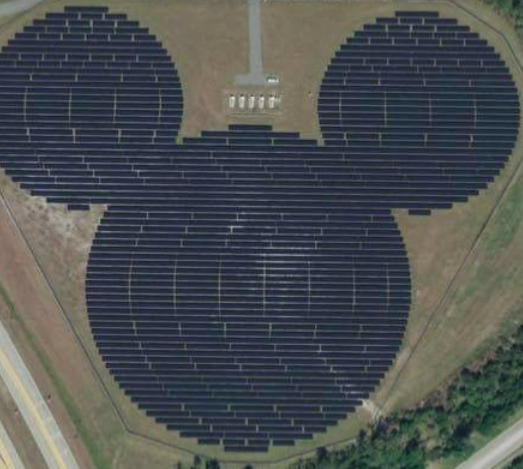This post expands on a LinkedIn conversation initiated by Josh Weiner, Solar Expert Witness & Solar Engineering Expert. Mr. Weiner has been at the forefront of the solar energy industry for over 20 years and is an industry leader on solar-plus-storage engineering & design. Josh’s expertise spans both in-front of and behind-the-meter initiatives including residential, commercial, utility, grid-scale, and ev charging solar and storage applications.
In a recent LinkedIn conversation, I was asked by Carlos Montiel, Lead Electrical Engineer of VEPICA, about the difference between designing solar for “reliability” vs “availability.” I quickly realized that what began as a 1-paragraph LinkedIn reply warranted a more comprehensive and deeper dive for solar assets, so here we go.
First, here are some definitions to get us on the same page:
- Reliability — the extent to which a desired output (say, solar generation) is repeatable. (Note: nothing is 100% reliable.)
- Availability — the extent to which the desired output (say, solar generation) is operational or working (e.g., “up-time”). (Note: nothing is 100% available, either.)
For instance, one could measure the IGBT frequency within an inverter many, many times. The results of these measurements will generate a bell curve (or Gaussian), and the variance (or standard deviation) will give us insight into how “reliable” this particular inverter feature is. In other words, the repeatability of the result is what deems this product “more reliable,” and results that fall way outside of the standard deviation will lower the reliability of the product.
One could also measure the total number of operating hours of this inverter, and we can compare that to the number of hours that the sun was up in the sky. Inverters that operate “in sync” with the rising / setting of the sun will be deemed to be “more available.” Inverters that “turn off” or “break” or, in any way, refuse to generate energy will lower the availability of the product.
Assuming we agree on these definitions, the next question becomes: what’s more important — reliability or availability? This is a fun and nuanced question that deserves more discussion.
In SepiSolar’s experience, a lot of companies focus on the reliability of their products. And, while reliability is indeed important, I actually think “availability” is equally, if not more, important. After all, what good is the reliable product or system if it has low availability?
Speaking for myself, if I had to choose one, I’d rather have something less reliable and more available, instead of something more reliable and less available (of course, I’d prefer to have both!). I would think most asset owners would also agree, since payments for energy production are often based on how well the asset is operating (e.g., how available it is, in relation to performance guarantees), and not necessarily how reliable it is. Availability, therefore, covers the assets.
Take roller coasters for example. Roller coasters are very reliable systems, right? When I asked a “mickey mouse engineer” (hey, he worked for Disneyland, so it’s OK for me to call him that!) how his company maintains quality on their products (since, after all, roller coasters are only made once, therefore, every roller coaster is a one-time prototype, essentially), he told me:
“It’s easy. Whichever engineer designs the roller coaster has to be the first person to test ride it!” As a result of a policy like this, you can bet that roller coasters will be very reliable. BUT, when was the last time you waited for less than an hour to get on one? Have you ever waited in line for hours only to find out that the roller coaster breaks down when you’re only 15 minutes away from your turn to ride?
While they’re very reliable, they’re not very available. That’s why, in order to ride roller coasters, you often have to wait in long lines like these:
Take solar inverters (or single-axis tracker motors) as an industry-relevant example. One can have a very reliable, robust, centralized inverter (or motor). However, when (not if) this inverter (or motor) fails, the entire system it’s connected to will also cease to operate. These inverters tend to be custom-built, there is lead-time to order and ship, and specialized electrical technicians require time to diagnose, troubleshoot, replace, and commission these devices. This means that while the inverter will have great reliability (after all, it successfully repeated thousands of generation events in the past before failing only one time), the availability might not be so great, considering the significant fraction of the system production that will be down, and the time it will take to get back up-and-running.
On the other hand, it’s relatively easy to keep some cheap string inverters (or “spare parts”) in a nearby warehouse, and it doesn’t take a sophisticated electrician to drive over in a pickup truck to replace a less-reliable string inverter in order to maintain availability.
In other words, central inverters may be more reliable and less available, whereas, string inverters may be less reliable and more available. The same rule applies for centralized vs distributed tracker motors. In fact, there are products that will outright fail reliability tests (for instance, a string-level monitor/combiner box will lose all ability to monitor the string), but continue to allow the system to operate and generate energy savings, which leads to better availability calculations than reliability ones.
These are just a few examples, and there’s plenty more to discuss and sift through. I haven’t even scratched the surface on nuances like, “Is the system still considered ‘available’ even if it’s performing sub-optimally or below spec?” and “What’s the definition of failure in a reliability or availability calculation?” among many other facets.
If you’d like to discuss this or any engineering or O&M topic further, we’d love to hear your opinion and chat further. Please email us at blogs@sepisolar.com.




